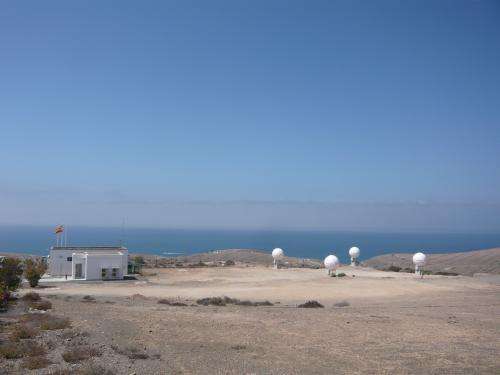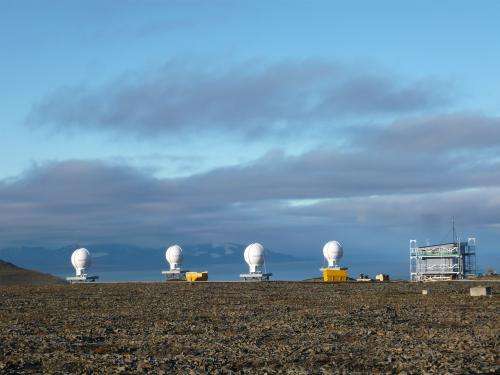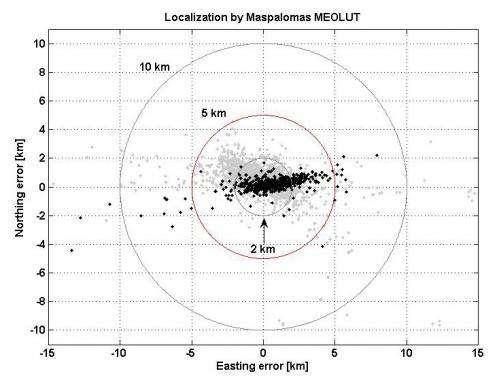European ground stations enable Galileo search and rescue testing

(Phys.org) —ESA's completion of a pair of dedicated ground stations at opposite ends of Europe has enabled Galileo satellites in orbit to participate in global testing of the Cospas–Sarsat search and rescue system.
The Maspalomas station, at the southern end of the largest island of the Canary Islands, at the southern fringe of European waters, was activated in June. And this last month has seen the Svalbard site on Spitsbergen in the Norwegian Arctic come on line – the two sites can already communicate and will soon be performing joint tests.
This speedy progress has enabled the participation of the latest two Galileo satellites in an international demonstration and evaluation programme – a worldwide test campaign for a new expansion of the world's oldest and largest satellite-based rescue system, Cospas–Sarsat.
Founded by Canada, France, Russia and the US, Cospas–Sarsat has assisted in the rescue of tens of thousands of souls in its three decades of service. Distress signals from across the globe are detected by satellites, then swiftly relayed to the nearest search and rescue (SAR) authorities.
Now the programme is introducing a new medium-orbit SAR system to improve coverage and response times, with the Galileo satellites in the vanguard of this major expansion.

Supporting search and rescue is a separate function to Galileo's main task of providing global navigation and timing services, but no less important.
The second pair of Europe's Galileo satellites – launched together on 12 October last year – are the first of the constellation to host SAR payloads. These can pick up UHF signals from emergency beacons aboard ships, aircraft or carried by individuals, which are then relayed to ground stations. There, the source is pinpointed and automatically passed on to a control centre, which then routes it to local authorities for rescue.
"The Galileo satellites, tested in combination with the same SAR payloads on Russian Glonass satellites as well as compatible repeaters on a pair of US GPS satellites, showed an ability to pinpoint simulated emergency beacons down to an accuracy of 2–5 km in a matter of minutes," explained ESA's Galileo SAR engineer, Igor Stojkovic.

"Our in-orbit validation tests so far have been in line with expectation and beyond, giving us a lot of confidence in the performance of the final system, once completed.
"And using a combination of satellites is just how the upgraded system will operate in practice, in order to localise distress signals."
Provided by European Space Agency





















